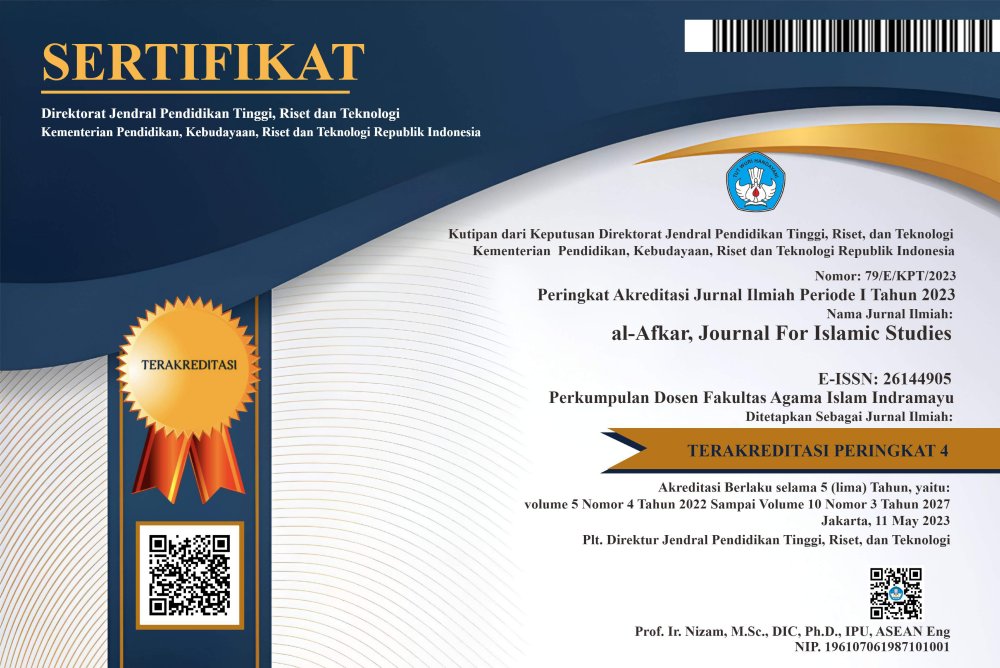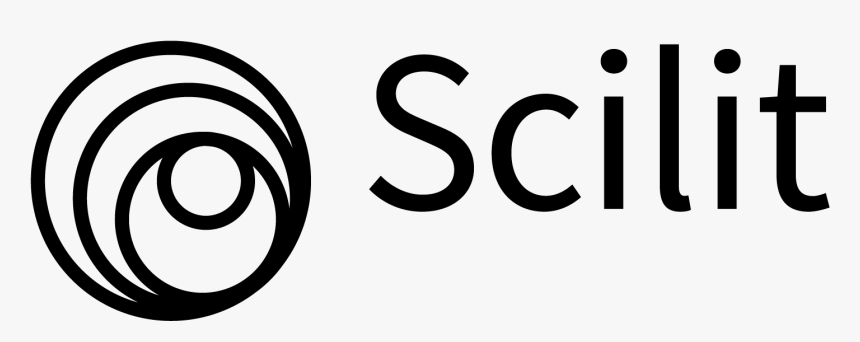A Study Between Tawhid And Pluralism In Buya Hamka And Nurcholish Madjid's Interpretation Of Kalimatun Sawa In A Comparative Review
DOI:
https://doi.org/10.31943/afkarjournal.v7i1.921Keywords:
Pluralism, Monotheism, Inter-Religious Relations, Buya Hamka’s Perspective, Nurcholis Majid’s Perspective.Abstract
This article attempts to explain the sentence sawa in interfaith. This concept needs to be further researched because it is anticipated as one of the approaches to inter-religious relations. Kalimatun sawa is a concept that comes from the Koran, namely Surah Ali Imran: 64, which is often used in inter-religious relations. However, there is a difference of opinion from two well-known Indonesian intellectual figures, namely Buya Hamka and Nurcholish Madjid, because they believe that Kalimun Sawa is religious pluralism and there are those who think Kalimun Sawa is a concept that explains that Islam is the only religion that is approved by Allah. . This type of research leads to qualitative research which is based on library research, both print and digital. By using comparative analysis, the author will explain the views of the two intellectuals to be analyzed and compared to reveal their different thought patterns. According to Hamka, Kalimun Sawa is an invitation to the people of the book to return to monotheism in order to establish Islam as the only true religion, on the other hand, Nurcholish Madjid interprets Kalimun Sawa as an effort to unite religions on the same basis. The research results state that current research regarding the Kalimun Sawa concept is not comprehensive enough to develop Nurcholish Madjid's ideas as a whole. Nurcholish Madjid put forward the idea of comprehensive theology, emphasizing Islamic universalism and the need for harmony between Islam, Indonesian culture and modernity. He believes Kalimun Sawa can become a common platform for various religions and contribute to the development of a multicultural model in interfaith relations in Indonesia. In closing, Buya Hamka and Nurcholish Madjid discussed the Kalimatun Sawa concept in the context of interreligious relations, but Nurcholish Madjid's synthetic theological ideas and the role of Kalimatun Sawa in introducing Multiculturalism were more comprehensive and relevant to contemporary Indonesia.
Downloads
References
A’yun, Qurrata, Lukita Fahriana, Kusmana Kusmana, Eva Nugraha, and Lilik Kultsum. “Interpretation of Sura Ali Imrān Verse 64 about Kalimatun Sawȃ`: An Analysis Study of Ma’na-Cum- Maghza,” 2021. https://doi.org/10.4108/eai.20-10-2020.2305165.
Abidin, Zainal. “167188-ID-Teologi-Inklusif-Nurcholish-Madjid-Harmo.” Humaniora, 2014, 665–84.
Adeng Muchtar Ghazali. “THE CONCEPT OF TOLERANCE IN ISLAMIC EDUCATION.” Ejournal of Sunan Gunug Jati 1 (2014): 17.
Aghni, Muh. Son. “Analisis Deskriptif: Pengertian, Tujuan, Metode, Dan Cara Membuatnya.” educativa.id, 2023.
Alfiyah, Avif. “METODE PENAFSIRAN BUYA HAMKA DALAM TAFSIR AL-AZHAR.” Jurnal Ilmiah Ilmu Ushuluddin 15, no. 1 (2017). https://doi.org/10.18592/jiiu.v15i1.1063.
Amalia Yunia Rahmawati. Spiritualisasi Islam, 2020.
APRILIANA. “Pluralisme Agama Dalam Pandangan Nurcholish Madjid,” 2010, 1–120.
Armayanto, Harda, and Adib Fattah Suntoro. “Konsep Kalimat Sawa’ Dalam Hubungan Antaragama: Analisis Komparatif Pandangan Hamka Dan Nurcholish Madjid.” Al-Misykah: Jurnal Studi Al-Qur’an Dan Tafsir 3, no. 2 (1970): 199–223. https://doi.org/10.19109/almisykah.v3i2.15073.
ASBANDI, N I M 13531160. “Konsep Toleransi Menurut Buya Hamka Dalam Kitab Tafsir Al-Azhar,” 2017, 197.
Assidiki, Rahmad. “KONSEP TOLERANSI BERAGAMA PERSPEKTIF HAMKA DALAM TAFSIR AL-AZHAR DAN RELEVANSINYA TERHADAP MASYARAKAT MULTIKULTURAL,” no. 249 (2023).
Dalimunthe, Farhan Abdillah. “Studi Pemikiran Buya Hamka Dalam Membangun Toleransi Umat Beragama Di Indonesia.” Https://Www.Researchgate.Net/Publication/330912594, no. February (2019): 6–7.
Fadli, Muhammad Rijal. “Memahami Desain Metode Penelitian Kualitatif.” Humanika 21, no. 1 (2021): 33–54. https://doi.org/10.21831/hum.v21i1.38075.
Gunawan, Hendri. “TOLERANSI BERAGAMA MENURUT PANDANGAN HAMKA DAN NURCHOLIS MADJID NASKAH PUBLIKASI Diajukan Untuk Memenuhi Tugas Dan Syarat-Syarat Guna Memperoleh Gelar Sarjana Ushuluddin (S.Ud) Pada Program Studi Perbandingan Agama (Ushuluddin) Oleh,” 2015.
Hamka. “Iman Dan Amal Shaleh,” no. III (1986): 154.
———. “Tafsir Al-Azhar Jilid 2: Ali Imran.An-Nisa.” Pustaka Nasional PTE LTD Singapura, 1982, 700–1568.
Hamka, Buya. Dari Hati Ke Hati, 2020.
Harmakaputra, H A. “Interfaith Relations in Contemporary Indonesia: Challenges and Progress.” Religion and World Affairs Series, 2016, 1–15.
Kamarusdiana, Kamarusdiana. “Al-Qur’an Dan Relasi Antar Umat Beragama; Diskursus Tentang Pendidikan Pluralisme Agama Di Indonesia.” SALAM: Jurnal Sosial Dan Budaya Syar-I 5, no. 3 (2018): 241–54. https://doi.org/10.15408/sjsbs.v5i3.9811.
Khasanah, Latifah Uswatun. “Analisis Data Kuantitatif, Kenali Analisis Deskriptif.” DQ LAB, 2021.
Madjid, Nurcholish. “Islam Doktrin Dan Peradaban, Sebuah Telaah Kritis Tentang Keimanan, Kemanusiaan, Dan Kemodernan,” 2019, 74.
Majid, Nurcholis. Dialog Diantara Ahli Kitab (Ahl-Kitab):Sebuah Pengantar Tiga Agama Satu Tuhan. mizan, 1999.
———. “Karya Lengkap Nurcholish Madjid,” no. Icmi (2020): 281–82.
Muhaimin, A.G. “The Islamic Traditions of Cirebon: Ibadat and Adat Among Javanese Muslims : Ibadat and Adat Among Javanese Muslims.” The Islamic Traditions of Cirebon: Ibadat and Adat Among Javanese Muslims : Ibadat and Adat Among Javanese Muslims, no. July (2006). https://doi.org/10.26530/oapen_459298.
Murni, Dewi. “Tafsir Al-Azhar: Suatu Tinjauan Biografis Dan Metodologis.” HUNAFA: Jurnal Studia Islamika 6, no. 3 (2009): 359. https://doi.org/10.24239/jsi.v6i3.146.359-376.
Muthmainnah, Muthmainnah. “Konsep Toleransi Beragama Dalam Al-Quran Perspektif Buya Hamka Dan Thoifur Ali Wafa.” Bayan Lin-Naas : Jurnal Dakwah Islam 5, no. 1 (2021): 1. https://doi.org/10.28944/bayanlin-naas.v5i1.246.
Nabil Amir, Ahmad, and Tasnim Abdul Rahman. “Cak Nur: Intelektual Cerdas Indonesia (Studi Biografi).” At-Tafkir 14, no. 1 (2021): 99–105. https://doi.org/10.32505/at.v14i1.2817.
Nawawi, Ahmad. Nurcholis Madjid Dan Teologi Islam (Rekontruksi Islamic Worldview Pluralisme Agama Perspektif Cak Nur). Angewandte Chemie International Edition, 6(11), 2015.
Nurcholish Madjid, Islam. “Doktrin Dan Peradaban.” Jakarta: Paramadina, 2000.
Nurlina, N, and B Busro. “The Concept of Religious Tolerance in Indonesia According to Buya Hamka in Tafsir Al-Azhar.” Gunung Djati Conference Series 4 (2021): 467–79.
Regus, Maksimus. “Interreligious Conflicts in Post-Authoritarian Indonesia: Assumptions, Causes, and Implications.” Jurnal Politik 5, no. 2 (2020): 199. https://doi.org/10.7454/jp.v5i2.267.
Rohman, Abdul, Barikli Mubaroka, and Qoree Butlam. “Methodology of Tafseer Al-Qurtubi: Sources, Styles and Manhaj.” QiST: Journal of Quran and Tafseer Studies 2, no. 2 (2023): 180–202. https://doi.org/10.23917/qist.v2i2.1451.
Said, Hasani Ahmad. “Kalimatun Sawa‘” 15, no. 1 (2019). https://doi.org/10.18196/AIIJIS.2019.0095.55-81.
Setiawan, Johan. “Pemikiran Nurcholish Madjid Tentang Pluralisme Agama Dalam Konteks Keindonesiaan.” Zawiyah: Jurnal Pemikiran Islam 5, no. 1 (2019): 21–38.
Siregar, Siti Syamsiyatun / Ferry Muhammadsyah. Etika Islam Dan Problematika Sosial Di Indonesia, n.d.
Suraya Sintang, Khadijah Mohd Khadijah@Hambali, Mohd. Nazmi Mohd. Khalli, Romzi Ationg, Syamsul Azizul Marinsah, and Halina Sendera Mohd. Yakin. “The Spirit of Human Fraternity Pervades Sabah’s Inter -Religious Landscape Preserving Unity in Diversity.” Afkar 24, no. 1 (2022): 191–242.
Suryadi. “Teologi Inklusif Nurcholish Madjid ( Pemikiran Tentang Pluralisme Dan Liberalisme Agama ).” Mantiq 2, no. 1 (2017): 59–66.
Taib, Mohamed Imran Mohamed. “A Muslim’s Perspective on Interfaith.” DIALOGOSPHERE, 2023.
Thabrani, Hepni; Babun Sukarto; Abd. Muis. “INCLUSIVE ISLAMIC DA ’ WAH MANAGEMENT ( A New Direction towards the Harmony of Civilization ).” Journal of Positive School Psychology 6, no. 4 (2022): 6987–95.
Ulfa, Maria. “Mencermati Inklusivisme Agama Nurcholish Madjid.” Kalimah 11, no. 2 (2013): 238. https://doi.org/10.21111/klm.v11i2.94.
Zuhdi, Muhammad. “Challenging Moderate Muslims: Indonesia’s Muslim Schools in the Midst of Religious Conservatism.” Religions 9, no. 10 (2018). https://doi.org/10.3390/rel9100310.
Downloads
Published
How to Cite
Issue
Section
License
Copyright (c) 2024 Azmil Iman Hartafan, Andri Nirwana AN

This work is licensed under a Creative Commons Attribution 4.0 International License.



















